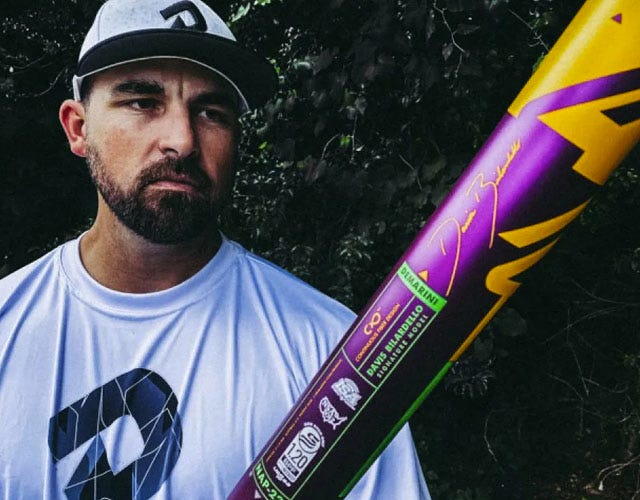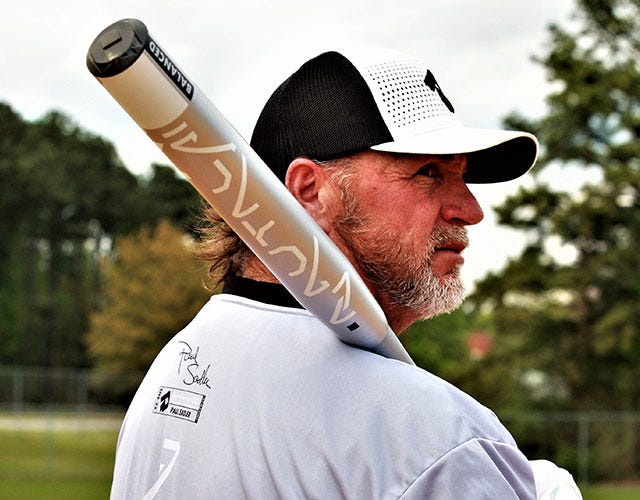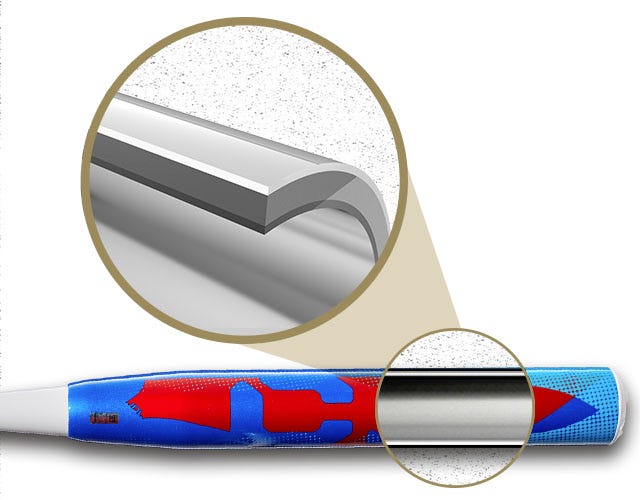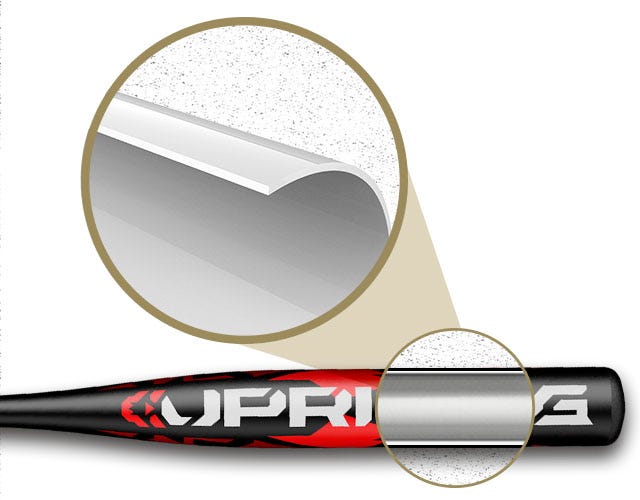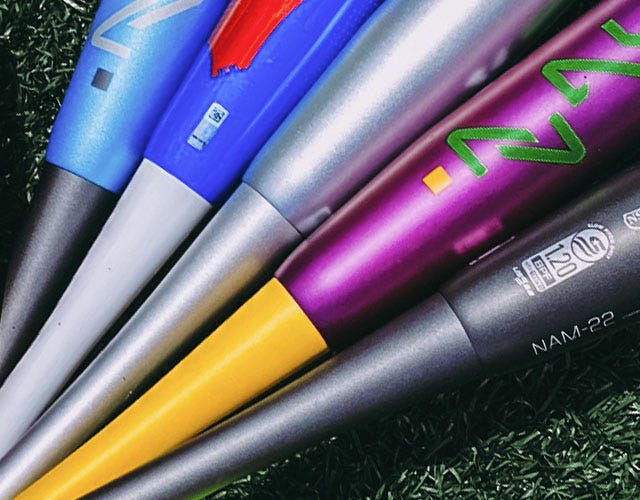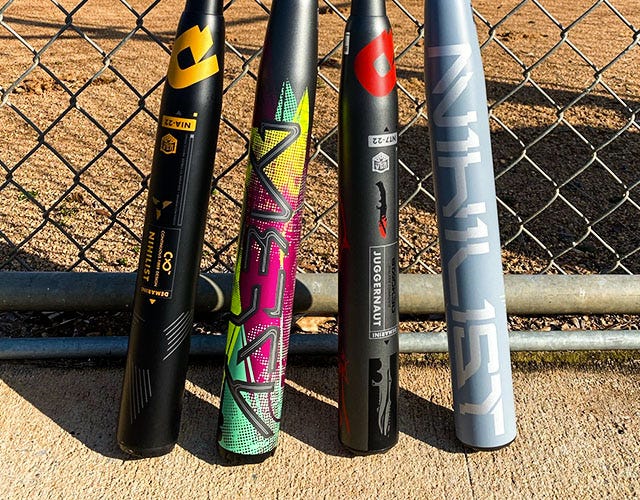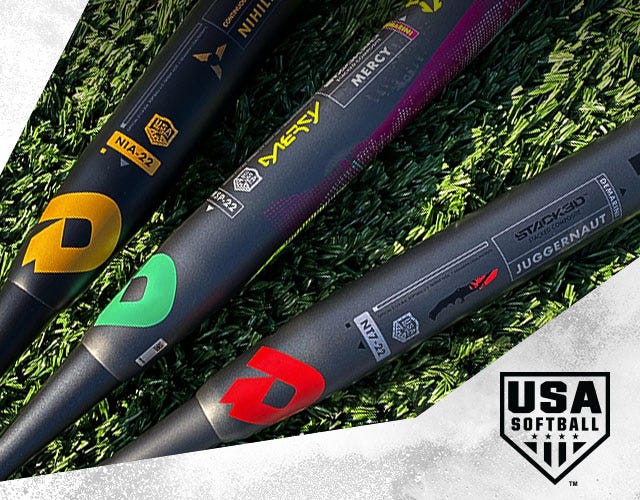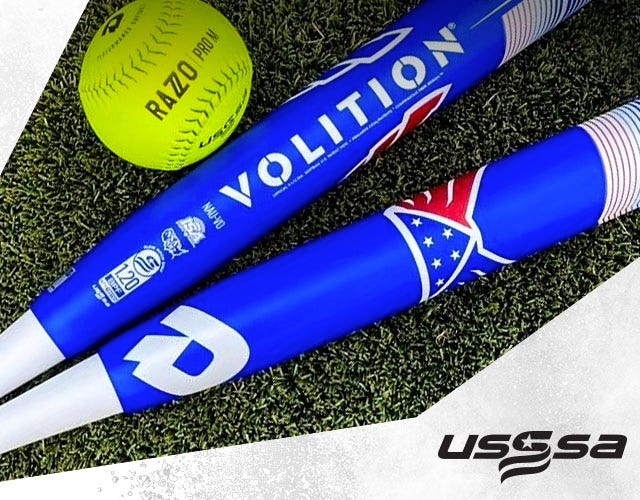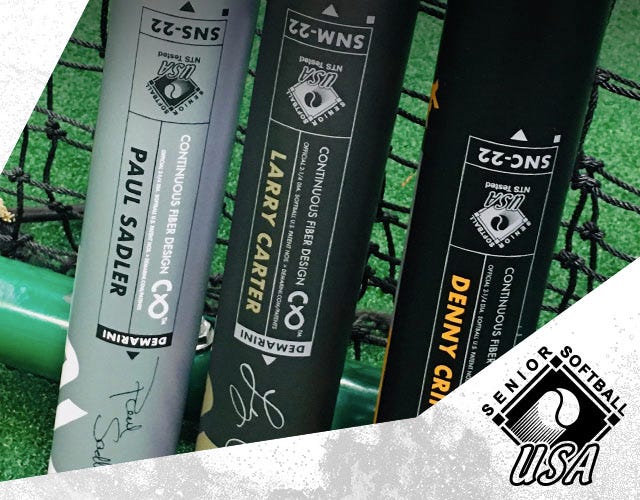Bat Sizing
LENGTH, WEIGHT, – AND WHY THEY MATTER
Success at the plate often comes down to this: making consistent hard contact against live pitching. To do this, it’s important to swing the right bat for you. That means a bat that’s long enough to cover the strike zone, light enough to swing with ease, heavy enough to generate power, and, of course, permitted in your league. In order to find the ideal size for you, consider the following guidelines:
Bat Technology
WHAT GOES INTO A BAT?
A bat is a carefully-engineered tool that allows players to get the most out of every swing. Every component of the bat, from the knob to the end cap, is designed to maximize every ounce of performance. There are four main tech components you need to know for your bat: Material, Construction, Barrel Diameter and Weight Balance.
COMPOSITE vs. ALLOY
One of the biggest influences on bat performance is its material. Bats are made of metal, composites, or wood. Metal and composite bats, are typically made of composite or alloy material, are traditionally used for youth baseball through college baseball. Wood, meanwhile, is used throughout the professional levels, as well as for specific amateur and travel ball leagues/organizations. Please read below to learn more about bat materials and how they affect performance.
Leagues
Governing Bodies
Governing bodies (for example, the USSSA) set unique standards for bat performance. Bat manufacturers make bats to meet these standards. Each standard, however, is different. So, bats meeting one standard may not meet another. Bats are marked with logos identifying the standard which they meet.
Leagues adopt the standards they deem appropriate for play under their particular rules. League adoptions vary region by region, so we highly recommend consulting your coach and/or league official to understand the standard adopted by your league prior to purchasing a new bat.
The following information will help you understand the standard adopted by your league:
There are six major governing bodies for slowpitch softball. They are United Softball Association (ASA), United States Specialty Sports Association (USSSA), Independent Softball Association (ISA), National Softball Association (NSA), International Softball Federation (ISF), and Senior Softball USA. The main three you need to know are USA, USSSA, and Senior Softball USA as their standards vary the most.
MASS INDEX
CHOOSE THE BAT THAT IS RIGHT FOR YOUR GAME
We are introducing a new way to talk about Slowpitch bats. Mass Index. Mass Index allows us to categorize our bats based on their “functional swing weight”.
MASS INDEX: How a specific size of a specific bat will feel when a player swings it at full speed, off of game speed pitching.
The Mass Index number relates directly to how the weight is distributed in a bat. A bat with a higher Mass Index number will have a heavier swing weight and feel more end-loaded, giving you more power on contact. Conversely, a Mass Index number that is lower will correlate to a lighter feel when swinging, giving you faster bat speed and more control of your bat through the zone.

